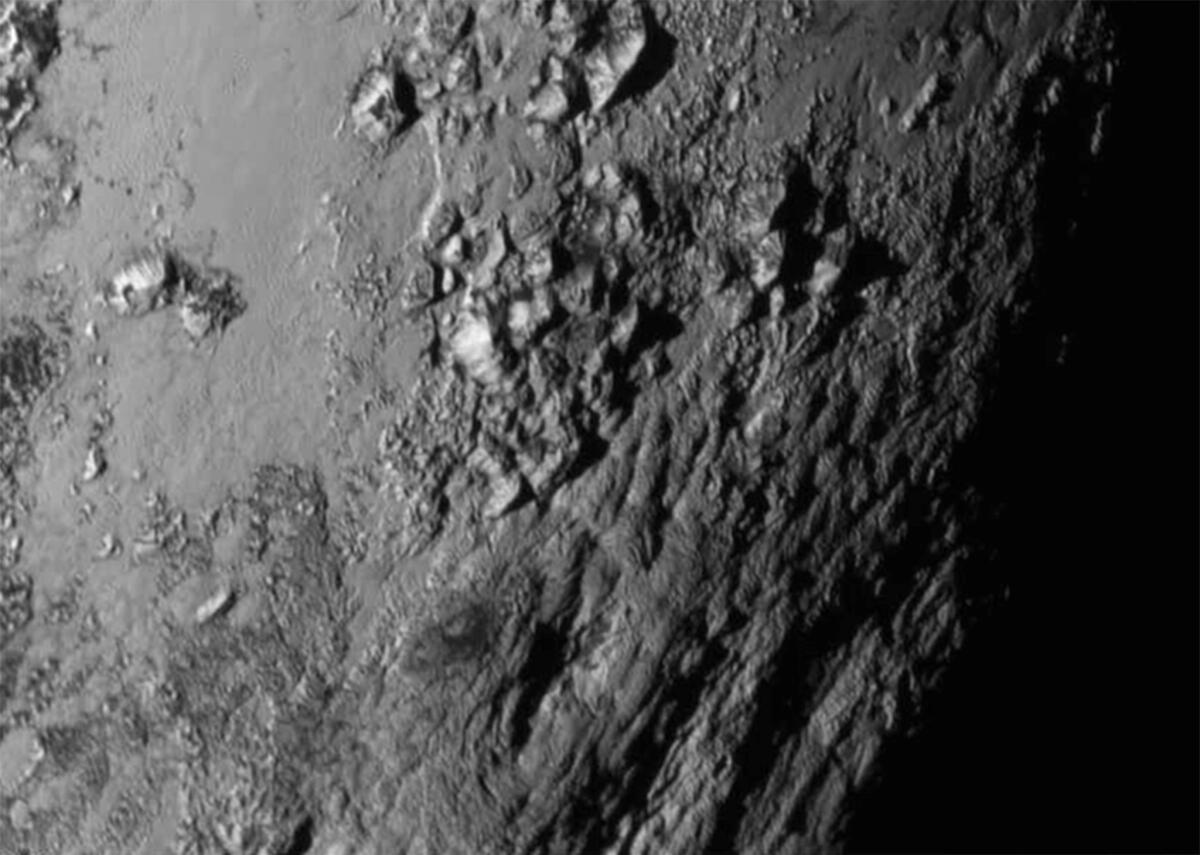Editorial: Looking good, Pluto

New close-up images of a region near Pluto’s equator reveal a giant surprise -- a range of youthful mountains rising as high as 11,000 feet (3,500 meters) above the surface of the icy body.
- Share via
NASA took a flier on its photo safari to Pluto, betting that a journey of 9 1/2 years and 3 billion miles to get sort of close and not even stop would yield some great pix. It did; in fact, what the New Horizons spacecraft sent back was a revelation. The flyby returned images of towering icy mountains on the scale of the Rockies, unexpected features on the least understood planet — dwarf planet, really — in our solar system. Not only were NASA officials counting on the spacecraft the size of a grand piano getting to Pluto, they were assuming they could keep communicating with it over that distance — no mean feat, considering how tricky it can be to keep a mobile phone connection on a car trip from one end of town to the other.
NASA’s venture to the farthest reaches of the solar system is a credit to scientific perseverance and chance-taking. It’s a reminder that while science and technology have given us marvels of speed such as instant messaging, Instagramming and Netflix (OK, maybe not Netflix), they have also given us extraordinary discoveries that required enormously lengthy investments of time. Consider that when New Horizons launched, in January 2006, Barack Obama wasn’t yet running for president and Pluto was still a full-fledged planet. (It got downgraded later that year.)
The initial images released show that Pluto has not just youngish (100 million years old) mountains but a mostly craterless surface — a possible indication of some relatively recent geological activity that acted as a face-lift for the planet. More stunning for scientists was that Pluto’s largest moon, Charon, was unmarked by craters. They also found on the moon cliffs, troughs and a canyon estimated to be 4 miles to 6 miles deep. And that’s just what scientists have seen so far. More photos are expected to be released Friday. Over time, the information gathered will not only teach scientists more about Pluto but may also yield insights into the beginnings of other planets and of our solar system.
There is something bittersweet about New Horizons traveling for so long only to get within 7,800 miles of Pluto and to have to speed by at 30,800 mph — the limitations of the physics and fuel of this operation. But data will continue to be transmitted back to Earth from the spacecraft over the next 16 months. Not bad for a brief flyby.
Space exploration, manned and unmanned, that takes us beyond the solar system will require even lengthier commitments of time and discipline. But it will enhance our knowledge of our universe and our world. And in this instance, it’s nice to see Pluto, nine years after its demotion, rehabilitated as a wondrous object.
Follow the Opinion section on Twitter @latimesopinion and Facebook
More to Read
A cure for the common opinion
Get thought-provoking perspectives with our weekly newsletter.
You may occasionally receive promotional content from the Los Angeles Times.








